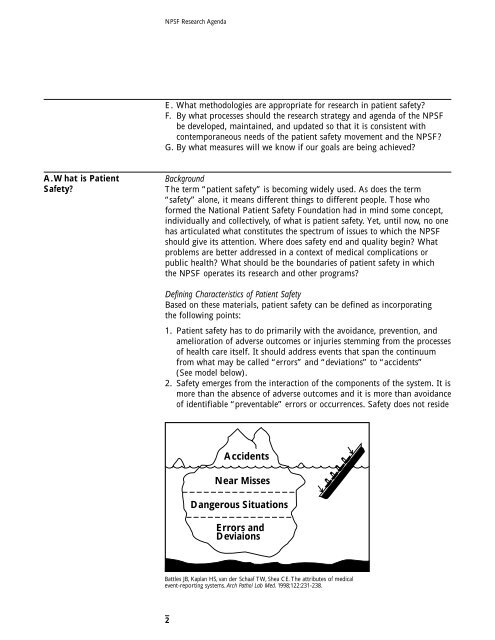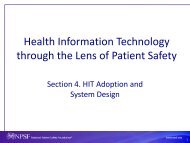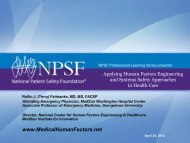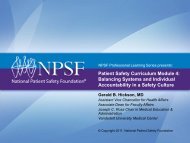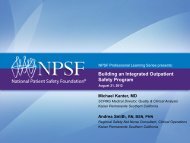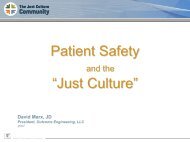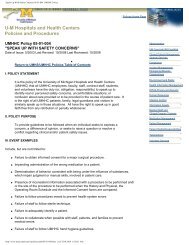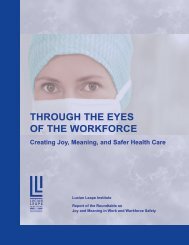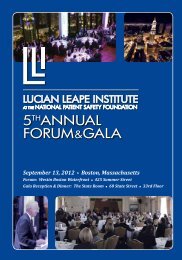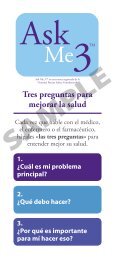Agenda for Research and Development in Patient Safety
Agenda for Research and Development in Patient Safety
Agenda for Research and Development in Patient Safety
- No tags were found...
Create successful ePaper yourself
Turn your PDF publications into a flip-book with our unique Google optimized e-Paper software.
NPSF <strong>Research</strong> <strong>Agenda</strong>E. What methodologies are appropriate <strong>for</strong> research <strong>in</strong> patient safety?F. By what processes should the research strategy <strong>and</strong> agenda of the NPSFbe developed, ma<strong>in</strong>ta<strong>in</strong>ed, <strong>and</strong> updated so that it is consistent withcontemporaneous needs of the patient safety movement <strong>and</strong> the NPSF?G. By what measures will we know if our goals are be<strong>in</strong>g achieved?A.What is <strong>Patient</strong><strong>Safety</strong>?BackgroundThe term “patient safety” is becom<strong>in</strong>g widely used. As does the term“safety” alone, it means different th<strong>in</strong>gs to different people. Those who<strong>for</strong>med the National <strong>Patient</strong> <strong>Safety</strong> Foundation had <strong>in</strong> m<strong>in</strong>d some concept,<strong>in</strong>dividually <strong>and</strong> collectively, of what is patient safety. Yet, until now, no onehas articulated what constitutes the spectrum of issues to which the NPSFshould give its attention. Where does safety end <strong>and</strong> quality beg<strong>in</strong>? Whatproblems are better addressed <strong>in</strong> a context of medical complications orpublic health? What should be the boundaries of patient safety <strong>in</strong> whichthe NPSF operates its research <strong>and</strong> other programs?Def<strong>in</strong><strong>in</strong>g Characteristics of <strong>Patient</strong> <strong>Safety</strong>Based on these materials, patient safety can be def<strong>in</strong>ed as <strong>in</strong>corporat<strong>in</strong>gthe follow<strong>in</strong>g po<strong>in</strong>ts:1. <strong>Patient</strong> safety has to do primarily with the avoidance, prevention, <strong>and</strong>amelioration of adverse outcomes or <strong>in</strong>juries stemm<strong>in</strong>g from the processesof health care itself. It should address events that span the cont<strong>in</strong>uumfrom what may be called “errors” <strong>and</strong> “deviations” to “accidents”(See model below).2. <strong>Safety</strong> emerges from the <strong>in</strong>teraction of the components of the system. It ismore than the absence of adverse outcomes <strong>and</strong> it is more than avoidanceof identifiable “preventable” errors or occurrences. <strong>Safety</strong> does not resideAccidentsNear MissesDangerous SituationsErrors <strong>and</strong>DeviaionsBattles JB, Kaplan HS, van der Schaaf TW, Shea CE. The attributes of medicalevent-report<strong>in</strong>g systems. Arch Pathol Lab Med. 1998;122:231-238.2


